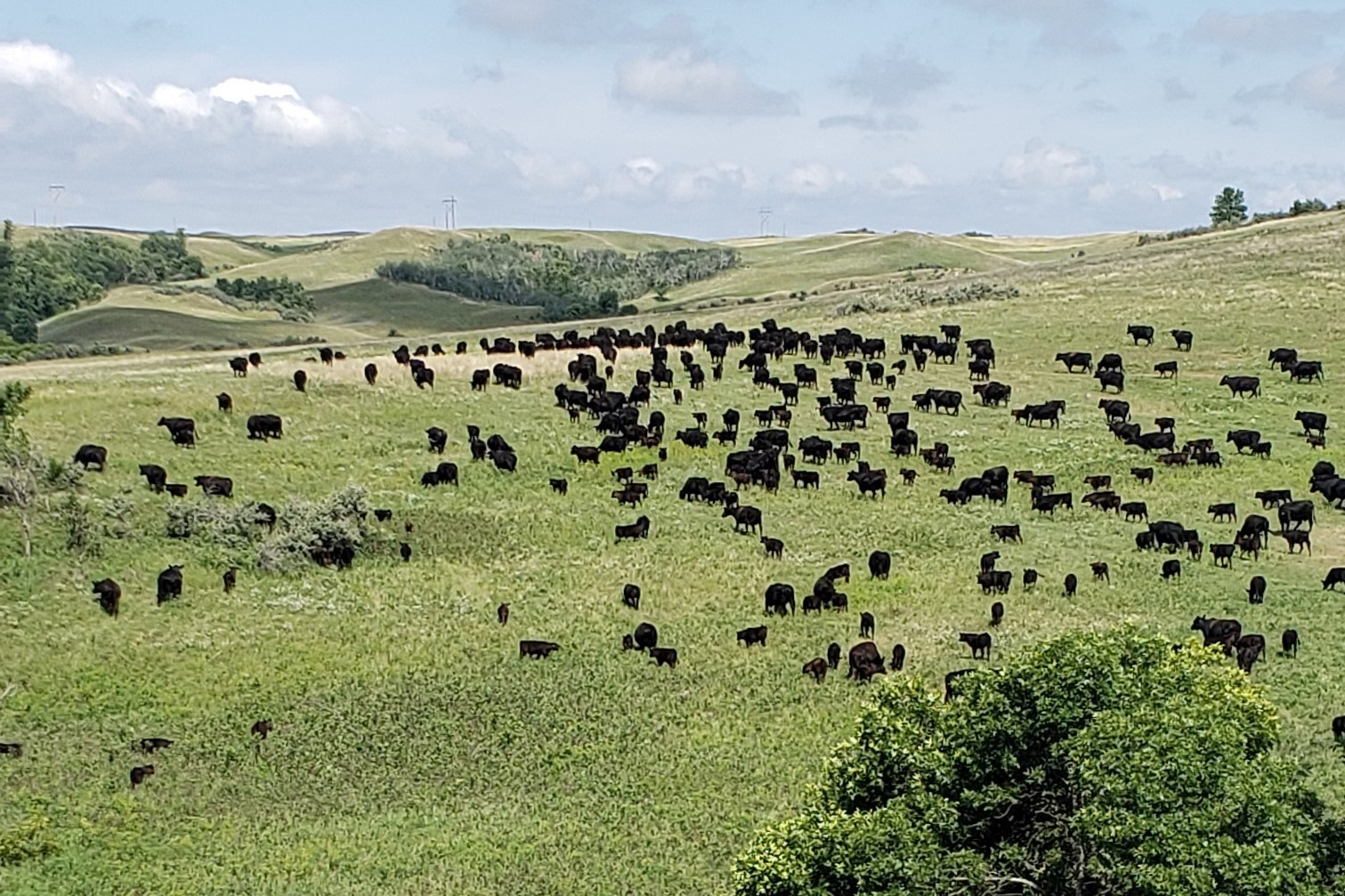For hundreds of years, buffalo grazed the Northern Great Plains, moving from location to location to mob graze without returning for an extended period of time. Today, grassland managers are working to replicate this natural cycle to promote soil health. The integration of livestock onto these working lands through regenerative practices improves soil health, increases nutrient and water cycling, increases productivity, improves wildlife habitat, and sequesters more carbon.
The benefits that buffalo provided the Plains grasslands are now being fulfilled through today’s domestic ruminants, specifically cattle. Cattle upcycle nutrients – in that 84% of all livestock feed is inedible for human consumption – and help grassland managers utilize these lands while also converting the forage into a nutrient-dense food source for humans. By consuming just three ounces of beef, humans are able to consume all 10 essential nutrients. Given this, cattle are not just an important part of the ecosystem, but an important part of human nutrition.
Regenerative practices also benefit wildlife and other microorganisms that inhabit the prairies. The natural co-existence of diversified species helps sustain the land, with each of the organisms contributing to the landscape. Domesticated animals and wildlife co-inhabit these lands, which not only sustains the lands, but, through proper management practices, enhances the capabilities of these natural resources.
Of the total working lands in the state, about one-third are uncultivatable due to rocks, hills, and poor soil. The North Dakota Grazing Lands Coalition (NDGLC) believes the management of these lands is important to the environment, people, and animals that inhabit them. NDGLC was founded to help inform and support managers of the working lands of North Dakota. With the evolution of different practices, NDGLC is working to regenerate North Dakota’s working lands so they support natural cycles.
Different regenerative practices implemented today include grazing management, eliminating or reducing tillage, implementing cover crops, crop diversity, composting, animal integration, promoting diversity of species, and reducing use of synthetic fertilizers. All these practices and more continue to move agriculture into a new era that will not only sustain working lands but ultimately regenerate them for future generations. These practices are not a ‘one size fits all’ for producers – they are ever evolving to new and innovative ideas that can benefit organisms, soil, water, and air.
Holistic management is an integral part of caring for the land, livestock, and people. All three act as a leg in the ecosystem tripod. Without one, the tripod collapses. In addition to the three integral parts, we can also add water and wildlife. If we take care of the land, the land will take care of us. If we take care of the land, the land will also take care of the livestock. Healthy soils produce healthy plants which, in turn, provide healthy forage for ruminants. These ruminants then convert the forage to healthy food for humans. The ecosystem includes many different aspects that require them to work together to enhance the lands, water, and air for future use. Agriculture and specifically cattle are the key to continuing this journey into the future.

